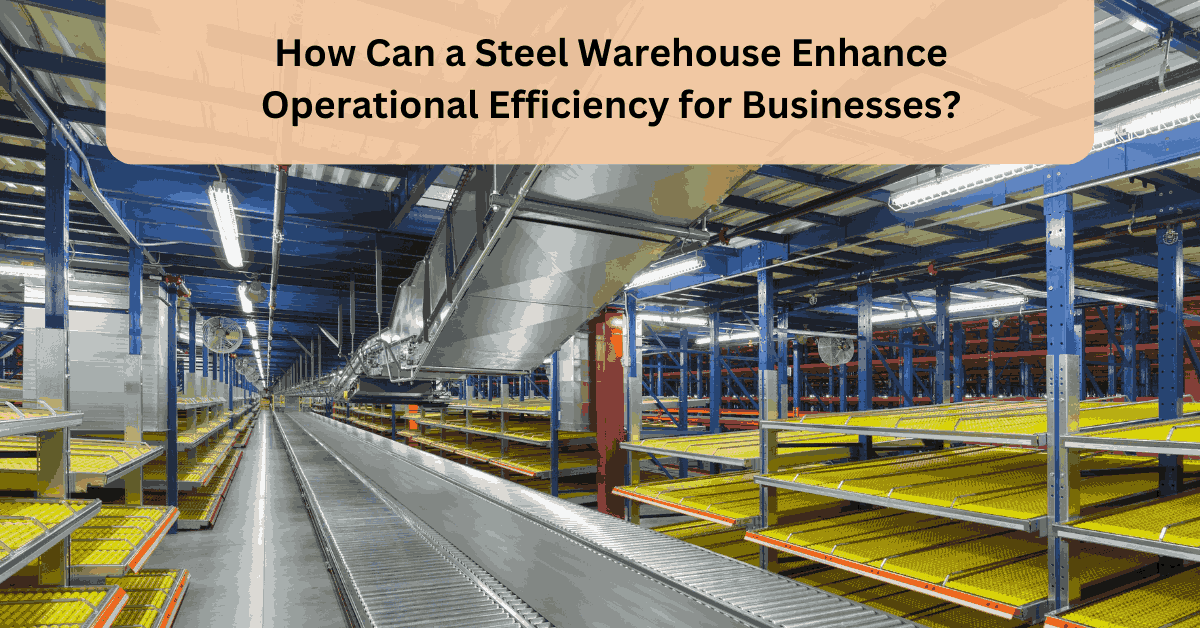In the dynamic landscape of modern business, operational efficiency stands as a key determinant of success. For industries involved in storage and distribution, the choice of warehouse infrastructure plays a pivotal role in streamlining operations.
Among the various options available, the steel warehouse has emerged as a popular and effective option for businesses aiming to optimize their operational processes.
1. Robust Infrastructure for Durability
One of the primary advantages of steel warehouses lies in their robust infrastructure. Steel, known for its strength and durability, provides a solid foundation for storing and protecting goods. Unlike traditional warehouses that may be susceptible to wear and tear, steel structures withstand the test of time, ensuring that businesses can rely on a long-lasting facility.
2. Scalability for Changing Business Needs
Business landscapes are constantly evolving, and the ability to adapt to changing needs is crucial. Steel warehouses offer a high level of scalability, allowing businesses to expand or modify their storage space easily. The modular nature of steel structures facilitates cost-effective adjustments, ensuring that the warehouse can grow in tandem with the business, accommodating fluctuations in inventory and demand.
3. Efficient Space Utilization
Optimizing available space is a key factor in operational efficiency. Steel warehouses, with their clear-span designs, maximize interior space utilization. This feature eliminates the need for support columns within the storage area, providing an unobstructed space for storing goods. The result is a more efficient layout that allows for organized storage and seamless inventory movement, reducing the risk of bottlenecks in the supply chain.
4. Speedy Construction for Rapid Deployment
Time is of the essence in the business world, and delays in constructing a warehouse can impede operations. Steel warehouses stand out for their rapid construction times compared to traditional building materials. Prefabricated steel structures can be erected quickly, reducing downtime and allowing businesses to operationalize their warehouses faster. This speedy deployment is especially advantageous for companies that swiftly capitalize on market opportunities.
5. Resistance to External Factors
The external environment poses various challenges to warehouse operations, including weather conditions and potential threats. Steel warehouses offer enhanced resistance to adverse weather, such as heavy snow loads, high winds, and seismic activity. Additionally, steel structures are inherently fire-resistant, providing an added layer of protection for valuable inventory. This resilience ensures business continuity even in the face of unexpected challenges.
6. Integration of Technology for Automation
In the era of Industry 4.0, the integration of technology is integral to operational efficiency. A steel warehouse provides a suitable framework for implementing automation and smart technologies. From automated storage and retrieval systems to IoT-enabled inventory tracking, businesses can leverage the structural advantages of steel warehouses to enhance overall operational efficiency. This integration streamlines processes, improves accuracy, and reduces labour costs.
In conclusion, the choice of a warehouse plays a pivotal role in shaping the operational efficiency of businesses. With their durability, scalability, and efficiency-focused design, steel warehouses emerge as a strategic investment for companies seeking to optimize their supply chain and storage operations. As businesses navigate the competitive landscape, the steel warehouse stands as a reliable ally in promoting resilience, sustainability, and streamlined operations.






